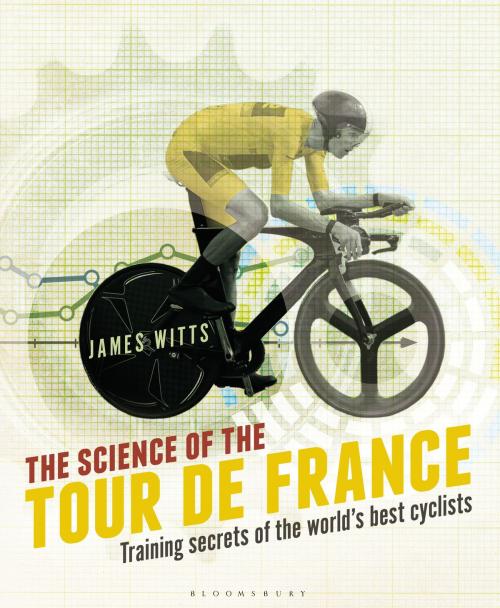The Science of the Tour de France
Training secrets of the world’s best cyclists
Nonfiction, Reference & Language, Education & Teaching, Teaching, Physical Education, Sports, Cycling| Author: | James Witts | ISBN: | 9781472921710 |
| Publisher: | Bloomsbury Publishing | Publication: | June 16, 2016 |
| Imprint: | Bloomsbury Sport | Language: | English |
| Author: | James Witts |
| ISBN: | 9781472921710 |
| Publisher: | Bloomsbury Publishing |
| Publication: | June 16, 2016 |
| Imprint: | Bloomsbury Sport |
| Language: | English |
Take an exclusive behind-the-scenes look at what it takes to create a world-class cyclist.
James Witts invites you into the world of marginal gains to discover the innovative training techniques, nutrition strategies and cutting-edge gear that are giving today's elite cyclists the competitive advantage.
Find out why Formula One telemetry is key to more bike speed; how power meters dictate training sessions and race strategy; how mannequins, computational fluid dynamics and wind-tunnels are elevating aerodynamics to the next level; why fats and training on water alone are popular in the peloton; and why the future of cycling will involve transcranial brain stimulation and wearable technology.
With contributions from the world's greatest riders, including Marcel Kittel, Peter Sagan and Bauke Mollema, and the teams that work alongside them: Etixx-Quick Step, Team Sky, Tinkoff, Movistar, BMC Racing, Trek-Segafredo and many more. Also meet the teams' sports scientists, coaches, nutritionists and chefs, who reveal the pioneering science that separates Contador and Cancellara from the recreational rider.
To win the Tour de France takes stamina, speed, strength… and science.
Take an exclusive behind-the-scenes look at what it takes to create a world-class cyclist.
James Witts invites you into the world of marginal gains to discover the innovative training techniques, nutrition strategies and cutting-edge gear that are giving today's elite cyclists the competitive advantage.
Find out why Formula One telemetry is key to more bike speed; how power meters dictate training sessions and race strategy; how mannequins, computational fluid dynamics and wind-tunnels are elevating aerodynamics to the next level; why fats and training on water alone are popular in the peloton; and why the future of cycling will involve transcranial brain stimulation and wearable technology.
With contributions from the world's greatest riders, including Marcel Kittel, Peter Sagan and Bauke Mollema, and the teams that work alongside them: Etixx-Quick Step, Team Sky, Tinkoff, Movistar, BMC Racing, Trek-Segafredo and many more. Also meet the teams' sports scientists, coaches, nutritionists and chefs, who reveal the pioneering science that separates Contador and Cancellara from the recreational rider.
To win the Tour de France takes stamina, speed, strength… and science.















